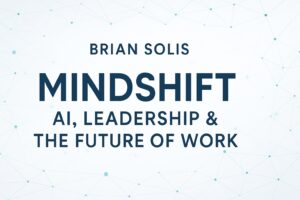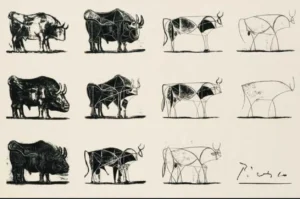
In February, the team at Pivot released a revealing research report that documented the increasing gap between marketer and customers. I referred to this as the Great Divide or the “The Perception Gap,” the distance between what customers want in social media and what executives think they want. In collaboration with Barnickel Design, we’ve just released this infographic that visualizes the extent of the perception gap between social consumers and social businesses.
Following this report and in many interviews I’ve hosted over the years asking about customer engagement, I will often hear, “Well, customers don’t know what they want.” Other common responses refer to Steve Jobs as if everyone shares his talent for innovation, “Steve Jobs never asked.” Or the ever popular Henry Ford quote never fails to make an appearance, “If I would have asked customers what they wanted, they would have said faster horses.”
Yes, it’s sometimes true. Customers don’t know what they want. And, sometimes they do. Asking is one part of the ongoing customer research your team should embrace now and over time. Research can lead to insights and insights can lead to innovation. Other byproducts of good research include the ability to feel customer empathy and translate it into inspiration, a powerful emotion that strives for relevance. Just watch any episode of Undercover Boss and you’ll see the same realization about empathy during the ending of every show.
The results of research are dependent on the caliber of the researcher and/or the person who interprets the data. I refer to this as the Human Algorithm—the ability to humanize data to put a face, personality, and voice to the need and chance for change…to help data tell a story.
Now onto Jobs and Ford. Let’s tackle Ford’s “famous words” first. Research cannot find evidence to support that Ford uttered those words after all. However, a more useful Henry Ford quote applies here..and he actually said it! In 1937, Ford was quoted in Dale Carnegie’s best-selling book, How to Win Friends and Influence People, “If there is any one secret of success, it lies in the ability to get the other person’s point of view and see things from that person’s angle as well as from your own.”
Now onto Mr. Jobs. Where do I begin? Steve Jobs is Steve Jobs. I’ve not met his equal, although I’ve met many brilliant and creative people in their own right. The question is, do you or your executive team possess Mr. Jobs’ talent, vision or drive for perfection? Let’s look at Apple in the broader sense as I don’t believe we’ll hear yes to the previous question as much as we hear about Steve Jobs not caring about market research.
Indeed, he was quoted in Fortune Magazine in March 2008, “We do no market research.” The quote was more in reference to how Apple crafts its business strategy not necessarily its product roadmap. It is however, widely known that Apple pays close attention to customer experiences and feedback. While Apple is incredibly quiet about how it develops and markets products, Tom Wood found this tidbit in one of Apple’s privacy statements…
How we use your personal information: We may also use personal information for internal purposes such as auditing, data analysis, and research to improve Apple’s products, services, and customer communications.
We must always listen and also learn to read between the lines. Yes, there’s a difference between asking and understanding. Whether or not you agree with asking what people want, knowing their preferences or discovering new opportunities is important.
After studying literally thousands of social media strategies, I can tell you that the majority of them are launched without catering to or even knowing the types of services customers expect. In the end, perception is reality.
Highlights:
76% of marketers feel they know what their customers want yet only 34% have asked customers.
83% of consumers seek deals, but only 53% of businesses think that’s what customers really want.
45% of marketers feel that rewards programs are important to customers and 70% of social consumers thought otherwise.
59% and 58% of social customers wish to engage businesses to share feedback and to also receive customers service respectively; on the contrary only 37% of marketers believe that these services are in demand by their customers.
There’s agreement between customers and marketers on product feedback. 55% of consumers and 53% of marketers would like to collaborate on improving products and experiences.
The focus of Pivot 2011 was the rise of the social consumer. In 2012, we’re concentrating two-days on the rise of the social business. Doing so will help strategists and executives build a social construct that narrows or closes the great divide.
See you at Pivot in New York this October! Use code solisVIP400 to save $400.






Great infographic, intresting highlights … but a little mistake in the post title? 🙂
Tommy, caught that as I hit publish…thank you!
Very informative. It’s really interesting to see how skewed perceptions are. With social media being a huge opportunity to open up two-way communication its fascinating how little businesses take advantage of it. Great post!
marketers think consumers use hipstamatic more than instagram? Am I reading that right? What marketers are they talking to?
Had the same reaction. Most of the stats seemed reasonable, but that one stuck out like a sore thumb.
Me too. Simply can’t believe this stat, as Instagram has a ton more consumer recall than any competitor. Would like to see the sample base to understand how this can be a robust figure…
If I’m reading this right, 33% of consumers used World of Warcraft in Fall, 2011? I can’t believe that’s true, even for “social consumers”
I was thinking the same thing about the Second Life stat. The “social consumer” definition used to limit the data must be fairly narrow.
Great article. I may be mis-understanding as I am reading the infograpic as the inverse of these results-“59% and 58% of social customers wish to engage businesses for buying
insights and customers service respectively; on the contrary only 37% of
marketers believe that these services are in demand by their customers.” What am i seeing wrong here? Thanks
This looks really interesting, and I am wondering if anyone knows if something similar has been made for knowledge institutions (GLAM´s)?
What’s a “Social Consumer?”
Clearly there is a disconnect somewhere. Yes, sometimes customers can’t always articulate exactly what they want, but that doesn’t mean we as marketers always know better. Sometimes you have to read between the line. “I want a hole” means “I need a shovel.”
What interests me most is the gap in perceived usage of social
applications. My assumption is that there is an equally large gap in how
social consumers use the products and services any business is
marketing. Knowing how customers use goods/services goes hand in hand
with listening to what customers want.
Full disclosure: I work for Transverse. Our TRACT billing solution
provides businesses with real-time insight on customer usage and
activity-based billing.
I like the topic. As so often happens with BS (unfortunate initials!?), I am both impressed at the cleverness yet a little skeptical too. The research appears designed to ensure the hypothesis was proved. The research is so broad (e.g. “How many “consumers” use World of Warcraft?”) that the odds of any surveyed marketer knowing anything about is not only very unlikely, but more importantly will be in most cases so far down any realistic research priority list for a given marketer as to be irrelevant to their effectiveness. Are we really to believe that the average marketer really needs to know how many “consumers” use WoW to be effective? Since when did WoW become an important marketing channel!?? What if the target audience they market to is extremely unlikely to fit this generalized statement about “consumers”? Nevertheless it’s a nice light research snack, and the general point made seems easy enough to swallow. Thanks, BS!
An interesting read, but I’m left wondering a little why “social consumer” is singled out as a segment. Recent research I’ve just been involved in suggest that up to 48% of general merchandise products involve multichannel purchases, including SM.
For me, I don’t see ‘pure play social customers’ as that representative, but it does depend on which industry you’re in…
This attitude toward marketing may be the last
gasp of the old model of talking at your customers as the whole business shifts
to talking with customers. The real irony is that these marketers are doing
this on the very site where they could ask their customers what they want,
instead of telling them.